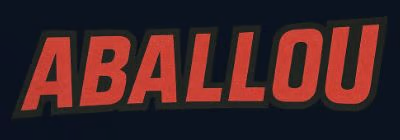Flick at Barcelona: Tactics Tested by Reality and Tough Conditions
7 October 2025

Key challenges for Flick
In his second season with Barcelona, the German coach Hansi Flick faces deep tactical hurdles that threaten his project despite a promising start. The team shows signs of strain in both defense and transitions, raising questions about how his ideas translate to the current group.
Despite backing from the club, global media has begun to spotlight recurring issues in defense and buildup play, prompting debates about whether Flicks philosophy fits the available components and how much adjustment is needed to maximize the players’ strengths.
ESPN highlights the tactical gap
The ESPN report centers on a defensive fragility uncovered after a loss to Paris Saint-Germain in the Champions League, just ahead of a painful setback to Sevilla. The piece identifies a clear gap in the way Barcelona operates at the back and in the pressure phases that precede attacks.
Flick admitted that the team did not perform on par with PSG, acknowledging that it was not their day but insisting the squad must defend, attack, and exploit spaces better while maintaining possession. The absence of influential players like Rafinha and Gavi has complicated the balance between pressing, buildup, and ball retention.
The analysis notes Barcelona fielded a high defensive line that allowed PSG to probe behind the full backs and deep defenses, with the decisive goal arriving late due to positioning errors and poor transitions. The result underscored how small margins translate into costly mistakes in big matches.
Balancing lines and the pivot problem
Barcelona has lacked a true pivot capable of breaking the tempo and winning back the ball, forcing Frenkie de Jong and Pedri to drop deeper and compromising the quality of attacking build-up. The buildup from deep areas became a bottleneck, with passes slower and sometimes aimed at congested zones rather than creating dynamic overlaps.
Although Flick employs a high-press and aggressive pressing philosophy, some players neither match the required technical level nor the physical demand, leading to repeated defensive slips not only against PSG but also in domestic fixtures that have spoiled results and confidence.
There is a suggestion that Flick may need to dial down the intensity in big games, opting for a more patient shape and a compact midline to neutralize teams that rely on rapid counters and quick transitions. The aim would be to tighten defensive structure without surrendering the ball or surrendering midfield control entirely.
The call to sharpen ideas is tied to Barça's financial reality, which limits the recruitment of a high-quality anchor or reliable backline reinforcement. Adapting tactics to the players currently available is seen as essential by pundits who view Flick as a project-forward coach rather than a coach with a fixed recipe.
Pivot and rotation questions
Barça Universal reported a string of injuries affecting key players Ter Stegen, Gavi, Rafinha, and more recently Yamal, which places extra pressure on the core group. Fatigue was evident in De Jong and Pedri, especially as Rafinha’s absence reduces the attacking density in the final third.
Another issue highlighted is the role of the attacking midfielder behind the strikers, often seen as missing or underused, leading to gaps between defense and attack that opponents exploit. When a youngster like Bardhaji features, the hope is that he can bring dynamism, but adaptation takes time.
Lewandowski has shown inconsistency and missed chances, including a penalty that underscored the team’s broader issues, while the shift to Rashford as a winger rather than a central striker reflects a experimentation with personnel roles to salvage results. Even the debutant youngster missed a couple of chances that could have restored balance before Seville’s late collapse.
Should Barcelona move on from Flick?
Spanish press remains cautiously supportive, with reports that Laporta still believes in the project despite a run of defeats. Analysts suggest Flick should align his ideas with the players’ quality and the club’s financial constraints, recognizing that he is not a failure but a coach with a bold vision who must adapt to reality. A well-known football saying echoes the sentiment: the smart coach knows when to step back to win more in the long run.
Ultimately, Flick’s success at Barcelona will hinge on his ability to translate a grand tactical philosophy into results that match the squad’s capabilities, while maintaining cohesion and resilience through the financial and injury storms that define modern Barca.
Punchline 1: If Flick’s tactics were a diet, they’d be all salad—great in theory, but the nutritionist forgot to stock the main course.
Punchline 2: Barca’s playbook is so dense that even a genius like Flick needs a map, a compass, and a fit midfielder named De Jong to get from A to G without getting lost in Xs and Os.



